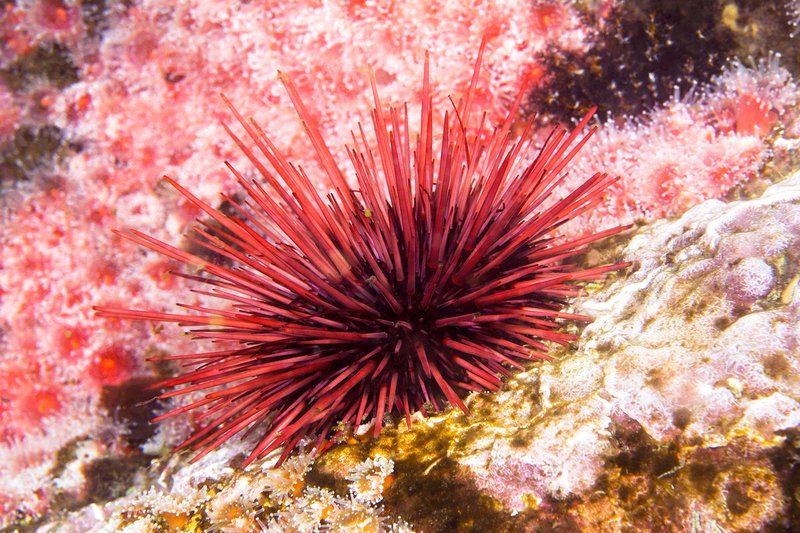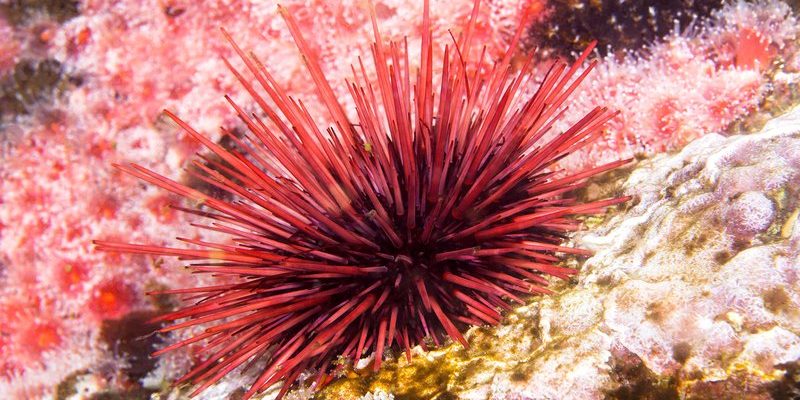
The Red Sea Urchin, with its vibrant red spines and intriguing behavior, is like nature’s little enigma in the ocean. Imagine walking along a rocky shoreline, and there, nestled among the tide pools, you spot a creature that looks like a living piece of art, glowing under the sun. These fascinating echinoderms aren’t just pretty to look at; they play an essential role in their underwater ecosystem. If you’ve ever been curious about what these creatures really are and how they live, you’re in for a treat!
In this article, we’re going to dive deep into the world of the Red Sea Urchin. We’ll explore everything from its physical characteristics and habitat to its diet and behavior. Whether you’re a marine biology buff or just someone who loves learning about the mysteries of nature, understanding the Red Sea Urchin will broaden your appreciation for the ocean’s diversity.
Physical Characteristics
The Red Sea Urchin is easily recognizable thanks to its striking appearance. Typically, these creatures measure around 4 to 8 inches in diameter, but some can grow larger. Their body is mostly spherical, covered with long, sharp spines that come in various shades of red. These spines not only add to their beauty but also serve as a defense mechanism against predators. Imagine trying to eat something that’s covered in sharp needles—it’s a pretty good deterrent!
Underneath those spines, the body is a soft, gelatinous mass that contains vital organs. The mouth is located on the underside and is surrounded by a structure called the Aristotle’s lantern, which looks like a unique chewing apparatus. This allows the Red Sea Urchin to graze on algae and other food sources on the ocean floor.
One of the coolest things about these sea creatures is their ability to change color slightly based on their environment. You might find lighter shades in sandy areas and deeper reds in rocky habitats. This ability helps them blend in with their surroundings, offering some protection from hungry fish and sea otters.
Habitat
Red Sea Urchins are primarily found in the Pacific Ocean along the rocky coastlines of North America, particularly in places like California and Alaska. They prefer shallow waters, often seen clinging to rocks and crevices where they can easily access food. Think of them as little vacuum cleaners of the ocean, helping to keep the environment tidy by munching on algae.
Typically, these urchins thrive in depths ranging from a few feet to about 100 feet, depending on factors like water temperature and food availability. They are most abundant in kelp forests and rocky reefs, places where the food supply is plentiful. These habitats not only provide sustenance but also shelter from predators.
Interestingly, the Red Sea Urchin has adapted to its surroundings over time. They can withstand a range of conditions, including varying temperatures and salinity levels. This adaptability is crucial for survival in the ever-changing ocean environment, showcasing nature’s incredible resilience.
Diet and Feeding Behavior
You might wonder what exactly a Red Sea Urchin eats. These creatures are herbivorous, primarily feeding on algae. Using their Aristotle’s lantern, they scrape and graze on the rocky surfaces to access their favorite foods, such as kelp and other forms of marine vegetation. It’s a bit like watching a tiny creature mowing the lawn of the ocean floor!
Interestingly, their feeding habits play a vital role in maintaining the balance of their ecosystem. By controlling algae growth, they help prevent overgrowth that can smother coral reefs and disrupt the habitat for other marine life. So, in a way, these urchins are little guardians of the ocean, ensuring that everything is in check.
In addition to algae, Red Sea Urchins sometimes consume detritus—decomposed organic matter. This scavenging behavior not only helps them get nutrients but also contributes to the overall health of their habitat. Nature really knows how to create a balanced system, doesn’t it?
Reproduction and Lifespan
The reproductive process of the Red Sea Urchin is quite fascinating. These urchins are broadcast spawners, meaning that during mating season, males release sperm into the water, while females release their eggs. This usually happens in late spring and early summer when water temperatures rise. It’s a bit chaotic—think of a confetti explosion under the sea!
Once fertilization occurs, the eggs develop into larvae that drift in the water column for several weeks. Eventually, they settle on the ocean floor and metamorphose into tiny urchins. This life cycle allows them to spread over a wide area, increasing their chances of survival in various habitats.
As for their lifespan, Red Sea Urchins can live for up to 30 years if conditions are favorable. Many factors, including predation and environmental changes, can affect their longevity. But in a protective environment, these little creatures can continue to thrive for decades, witnessing the ever-changing underwater world around them.
Ecological Importance
The Red Sea Urchin is not just a pretty face; they play a crucial role in their ecosystem. As grazers, they help control algae populations, which is vital for the health of marine environments. Excessive algae growth can lead to problems, such as smothering coral reefs and blocking sunlight, which many sea creatures rely on.
By keeping algae in check, Red Sea Urchins help create a balanced ecosystem where various marine organisms can thrive. They also provide food for several predators, including sea otters and certain fish species. This interdependence highlights the importance of every creature, no matter how small, in maintaining the health of ocean ecosystems.
Moreover, studies have shown that the presence of Red Sea Urchins can indicate the overall health of the marine habitat. If their populations are thriving, it usually means the ecosystem is in good shape. This makes them valuable not only for environmental monitoring but also for understanding the complexities of marine biology.
Threats and Conservation
Like many marine creatures, Red Sea Urchins face several threats in their natural habitats. Overfishing, climate change, and pollution are significant concerns that can impact their populations. For instance, the rise in ocean temperatures can affect their reproductive success and overall health. Warmer waters can lead to diseases that can decimate local populations.
Furthermore, increased ocean acidification can weaken their shells, making them more susceptible to predation and environmental stress. These factors underline the importance of conservation efforts aimed at protecting marine habitats. By managing fishing practices and reducing pollution, we can help ensure the survival of Red Sea Urchins and the ecosystems they support.
Some conservation programs focus specifically on the protection of kelp forests and reef habitats, which are crucial for the survival of many marine species, including the Red Sea Urchin. It’s essential for us to understand that protecting the ocean is vital not only for these creatures but also for the health of our planet.
Interesting Facts
Here are some fun facts about the Red Sea Urchin that might surprise you:
- Color Varieties: While they are typically red, some variations can appear purple or green based on their environment.
- Unique Movement: Red Sea Urchins move slowly using their tube feet, which are tiny, soft appendages that allow them to cling to rocks and navigate their habitat.
- Predators: Natural predators include sea otters and certain fish, which have adapted to eat these spiny creatures despite their defenses.
- Culinary Delight: In some cultures, Red Sea Urchins are considered a delicacy, often enjoyed for their roe, which has a rich, briny taste.
FAQ
What is the diet of the Red Sea Urchin?
Red Sea Urchins primarily feed on algae and detritus from the ocean floor. Their unique mouth structure, known as Aristotle’s lantern, allows them to graze effectively on these food sources. Algae form a significant part of their diet, helping them to maintain the balance of their underwater ecosystems.
Where can Red Sea Urchins be found?
Red Sea Urchins inhabit the Pacific Ocean, particularly along the rocky coastlines of North America, including California and Alaska. They prefer shallow waters and are often seen in kelp forests and rocky reefs where food is abundant.
How do Red Sea Urchins defend themselves?
The Red Sea Urchin has a tough defense mechanism—its long, sharp spines! These spines deter predators like fish and sea otters, making it difficult and uncomfortable for them to consume these little creatures.
How long do Red Sea Urchins live?
Red Sea Urchins can live for up to 30 years if conditions are suitable. Their lifespan can be influenced by factors like predation and environmental changes in their habitats.
What role do Red Sea Urchins play in their ecosystem?
As grazers, Red Sea Urchins help control algae populations in their environment. This is crucial in preventing algae overgrowth that can smother coral reefs. Their presence is a sign of a healthy marine ecosystem.
Can Red Sea Urchins change color?
Yes! These sea urchins can change their color slightly based on their environment. They may appear lighter in sandy areas and deeper red in more rocky habitats, which helps them blend in and avoid predators.
Are Red Sea Urchins considered endangered?
While Red Sea Urchins are not currently classified as endangered, they face threats from overfishing, climate change, and pollution. Conservation efforts are essential for protecting their populations and the health of their habitats.
How do Red Sea Urchins reproduce?
Red Sea Urchins reproduce through a process called broadcast spawning. During mating season, males release sperm into the water while females release eggs, allowing fertilization to occur in the ocean’s open water. The fertilized eggs develop into larvae that later settle on the ocean floor.
What are the main predators of Red Sea Urchins?
Predators of Red Sea Urchins include sea otters and certain fish species that have adapted to consume these spiny creatures. Their tough, spiny exterior offers some protection, but they still remain a food source for these predators.
What is the significance of Red Sea Urchins in marine cuisine?
In some cultures, particularly in coastal regions, Red Sea Urchins are considered a delicacy. Their roe, known for its rich, briny flavor, is prized in sushi and other seafood dishes, contributing to the culinary diversity of marine life.
How do environmental changes affect Red Sea Urchins?
Environmental changes such as rising temperatures and ocean acidification can significantly impact the health and populations of Red Sea Urchins. Warmer waters may affect their reproductive success, while acidification can weaken their protective shells, making them more vulnerable to predators.
What can we do to help protect Red Sea Urchins?
To help protect Red Sea Urchins, supporting sustainable fishing practices, reducing pollution, and keeping marine habitats healthy is crucial. Participating in conservation efforts and raising awareness about the importance of marine ecosystems can make a difference in protecting these and other marine creatures.

